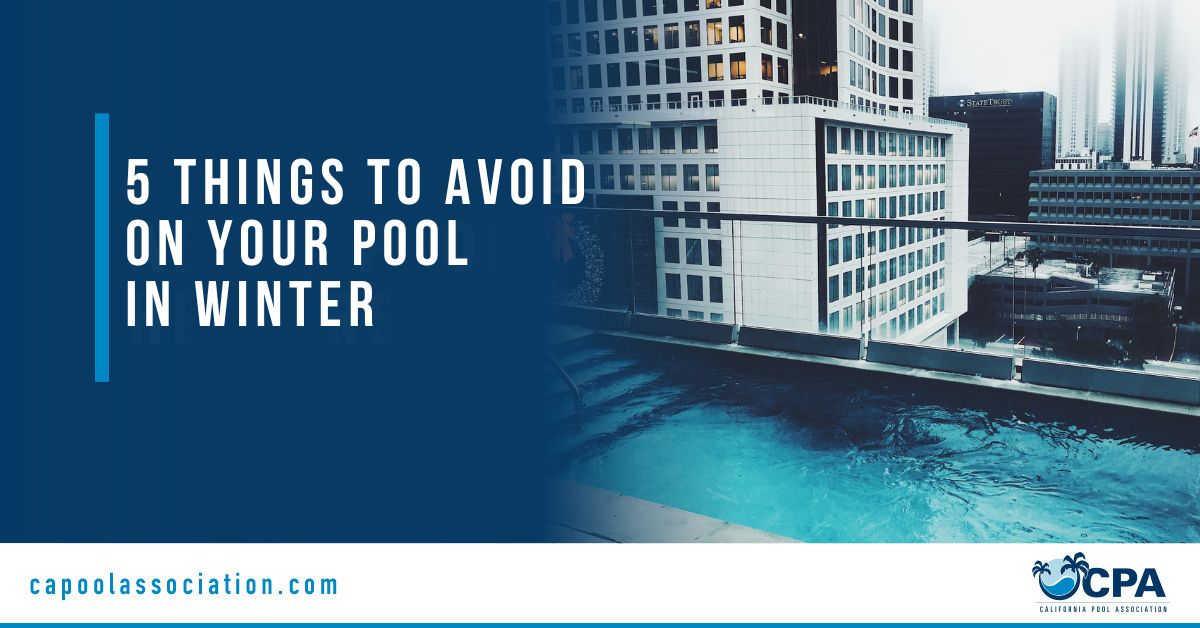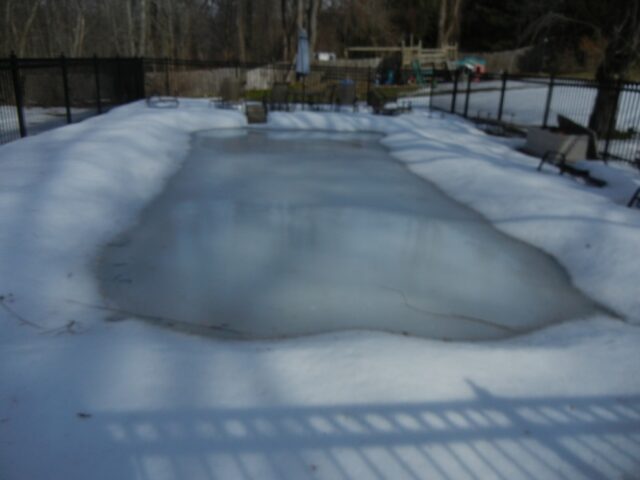
Winter care is about prevention. A few smart steps now can save you from cracked pipes, stained surfaces, green water, and even denied insurance claims later. Here are five common “don’ts” (and what to do instead) for a smoother, cheaper spring opening.
Cold water slows problems, it doesn’t stop them. Off-balance water over winter can etch plaster, stain liners, corrode metal parts, and feed spring algae. Test and balance at closing and at least monthly through winter (more often after heavy rain or wind). Keep pH, total alkalinity, calcium hardness, and sanitizer within standard ranges used by pool professionals and public-health guidance.
| Parameter | Typical Range | Why it matters in winter |
|---|---|---|
| pH | 7.2–7.8 (aim ~7.4–7.6) | Protects surfaces and helps sanitizer work effectively. |
| Total Alkalinity | 80–120 ppm (most chlorine pools) | Buffers pH swings caused by storms, debris, and chemical additions. |
| Calcium Hardness | 200–400 ppm (plaster often toward higher end) | Too low can etch plaster; too high can scale when temperatures fluctuate. |
| Free Chlorine (or bromine) | Maintain a residual per your sanitizer and CYA level | Prevents algae and bacterial growth under the cover. |

Turning everything completely off invites freeze damage and spring algae if you’re not fully winterized. In freezing regions, enable your automation’s freeze-protection mode so the pump runs when air or water temperatures drop. In milder climates, a short daily circulation window helps distribute chemicals and prevents stagnation. Follow the manuals for variable-speed pumps, heaters, and salt systems.
A good cover blocks debris and sunlight; a neglected one can rip, overload anchors, and dump dirty water into the pool when it fails.
The “right” winter level depends on your climate, cover type, and pool design:
Always follow your builder’s and cover manufacturer’s guidance for your specific pool.
Pouring large, undissolved amounts of winter chemicals can bleach liners, pit plaster, and cause new imbalances.
Good winterization keeps opening costs low and reduces the chance of damage or liability. Homeowners insurance often covers sudden water damage from a burst frozen pipe when you’ve taken reasonable steps to prevent freezing; gradual damage and poor maintenance are commonly excluded. Keeping barriers, covers, and chemistry in order also lowers liability risk—important for families, guests, and neighbors—and can help avoid coverage disputes if something goes wrong.